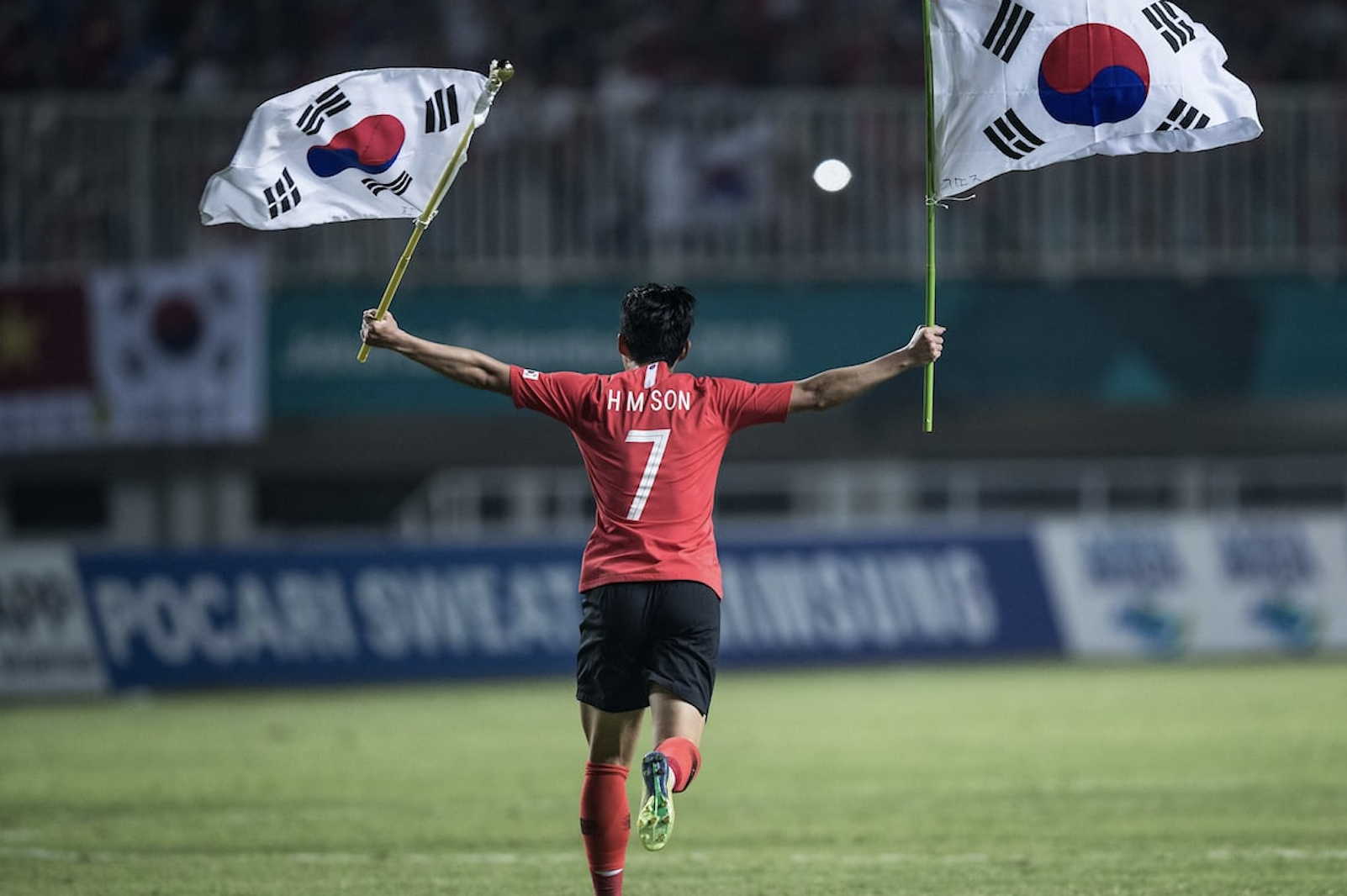
Photo credit: NSS Sports
South Korea has been leveraging its soft power to grow its global influence through pop culture, from K-POP to K-Drama, to gaming, and to hosting mega sports events including The 1988 Seoul Olympics, the Korea-Japan World Cup, and the Busan Asian Games in 2002 and PyeongChang 2018 Olympic Winter Games.
China and India are the two biggest sports ecosystems in Asia while South East Asia’s market is rapidly emerging and catching up. Yet, we should not overlook the opportunities in Korea’s sports and esports market as it is unique and has competitive advantages. As a matter of fact, Korea boasts of a high GDP per capita (nominal) at US$35,196, which implies that its people have high spending power.
In this article, we will highlight the reasons why certain key sectors in Korea’s sports ecosystem including esports, football, and golf are worth investing in. Jaewoo Seo (Jay), AST’s advisor who is an expert in the Korean market, and Chris Lee, GM of PGA Tour APAC have also shared their insights with us.
The Cradle of esports culture
Korea is often referred to as the mecca of esports having installed a national broadband network back in the 1990s that allowed for the development of its world-renowned gaming culture. Korean youth are known to hone their gaming skills in internet cafes known as “PC bangs” and for this reason, they rose to the top of the esports scene.
Jay described Korea as a “laboratory of esports”: “Korea has been driving the evolution of the global esports industry.”
“It has an established and experienced ecosystem with media, iconic esports stars and a proper league structure, the esports culture is deeply ingrained like football in Brazil. This makes it less challenging for foreign companies to enter the market since they don’t have to work from the ground up.”
Jaewoo Seo, Founder of Danim Group / AST’s Advisor
(Read AST’s previous article on ‘What makes Asia is an esports powerhouse’)
Esports has shifted over the past decades going from a hobby to a viable career. According to a survey by the Education Ministry done in 2020, esports had become the fifth-most popular future career among South Korean students. Korea even has gaming academies such as the Gen.G program which facilitates students’ dreams of becoming professional gamers.
South Korea is a dominant force in the world of gaming. While late movers like the USA and China have surpassed South Korea in terms of the size of their esports markets, South Korea is still home to some of the most valuable esports organizations. Only two Asian teams, Korean teams Gen.G and T1, made the Forbes World’s Top 10 esports organisations in 2021. They ranked 8th and 10th receiving US$250million and US$220million valuations respectively.

While China has recently imposed a 3-hour gaming limit on under-18s, South Korea has lifted gaming bans for minors under the age of 16. These opposing policy decisions may allow Korea to cement its position as the dominant force in Asia in terms of competitive prowess and esports market size for years to come. (Check out AST’s article on how China’s gaming ban will change the global esports landscape)
Further, as the entertainment and the showbiz industry is huge in Korea, it creates opportunities for esports companies to leverage this and facilitate cross-industry collaboration with music, sports, and entertainment.
Set to be Asia’s premier football destination
South Korean Son Heung-Min, a forward for Premier League club Tottenham Hotspur and captain for the South Korea national team has been making headlines in the world of sports and has had a huge influence in shaping Korean football culture.
Seeing a Korean football player become one of the sport’s biggest stars has sparked a surge of interest in the sport across the Asian community, especially among the South Koreans. Data from the Korean Ministry of Culture, Sports and Tourism showed that the economic value generated by Son Heung-min was worth US$1.5 billion (1.9 trillion won) in 2020.
Son’s presence in the Premier League also boosted the popularity of the Premier League in the country, especially for his team Tottenham Hotspur. In a country of around 52 million people, 21.4% of South Koreans aged 16 to 69 identify as Spurs fans – that’s about 11 million fans. With this large of a fanbase, it’s no surprise that the club decided to take part in an international pre-season tour in South Korea where they will be engaging with fans, supporting good causes, discovering local culture, and delivering its Global Football Development Program.
South Korea also performed well on the global stage, its national team will be making their eleventh appearance at the World Cup and they are the top-performing country in the AFC Champions League finals with 12 titles and 7 runner-ups. This is no surprise as South Korea has developed and emerged as a major football power in Asia since the 1980s and is historically the most successful Asian football team.
South Korea’s K League, along with the Chinese Super League, and Japan’s J- League, are top-tier football leagues in Asia. The league features a well-run competition with solid sponsorship and widespread coverage.
With the football frenzy driven by Son, the opening of the Korean National Football Centre and potentially hosting the AFC Asia Cup Finals in 2023, Korea is set to become Asia’s premier football destination. As football continues to grow in South Korea, there are multiple opportunities for IPs, academies and football tech around fan engagement, player performance, player management, training and monitoring to grow and capitalize on the growing Korean fan base. (Learn how football tech can level the playing field & take advantage of fan excitement about football in Asia)
Golf is Koreans’ new favorite sport
Korea is currently the third-largest market for golf globally, just behind the United States and Japan, according to CNBC. Golf in Korea has always been big, and it continues to boom with a record number of golf rounds being booked, equipment sales, golf course memberships, indoor simulated golf, and apparel sales. Many Korean players are now finding success on global Tours such as the PGA Tour and LPGA.
Pak Se-ri, the woman who is recognized as a trailblazer in the golf scene in South Korea contributed to this growth. She became the first Asian to win the Women’s US Open major in 1998 and she was also the first South Korean to be inducted into the LPGA Hall of Fame. Throughout her 19-year career, she secured 123 career top-10 finishes and won 25 LPGA titles.
Her success inspired a generation of young Korean female golfers to follow in her footsteps. These women, dubbed “The Se-ri kids”, are shining on the global stage. Many players from South Korea have made it to the leaderboard of LPGA and in the Rio 2016 Olympics, Inbee Park brought Korea its first Olympic gold medal in women’s golf since 1900.
Golf is also extremely popular as a leisure sport and it is becoming a lucrative sector in Korea’s sports market. According to a white paper released by the Korea Leisure Industry Research Institute, Korea’s golf market (including entrance fees, golf cart fees, caddie tips, beverage fees, etc.) set a record high and reached $US6 billion in 2020, at an 18.3% year-on-year increase. It also indicated that the market saw a growth of 82% from 2010 to 2020.

With the support of South Korea’s government in promoting golf at a grassroots level, golf has become a lot more universal and affordable. From 2010 to 2020, the number of public golf courses increased from 167 to 344 while the number of private golf clubs decreased from 210 to 158. During the pandemic, the number of visitors to Korean golf courses has increased sharply. A report from the Korea Golf Association estimated that the number of golf course visitors exceeded 50 million in 2021.
The Korean golf market is at a prime stage where we will see exponential growth from different sub-sectors of the golf business including technology, equipment and apparel, and sports tourism.
“ There has been growth in every category of golf business you could imagine.”
Chris Lee, GM at PGA TOUR APAC
Chris added: “A Korean fund has been involved in selling Japan’s largest golf course network – Accordia Group. Korean companies also own two of golf’s largest brands in the world, Titleist (Fila) and Taylormade (Centroid) through acquisitions. A country with a population of 50m has 5 dedicated golf channels and golf variety shows featuring famous K-celebrities can be seen in virtually every major channel both terrestrial and cable.”
Golf has been growing on the technological side as well. “There are now multiple companies developing simulator golf machines, ball flight measurers, range finders, and smart scoring systems. With continued growth in the sport and demand for creativity, consumers are looking for innovative ways to consume the sport and there will be lots of opportunities in golf technology.” said Lee.
The future state of Korea’s sports and esports market
Korea’s market is still very unique, especially in terms of how consumers react, and there are still many opportunities for growth. According to Jay: “There is a unique dynamic about the Korean market. When people like something, they will get obsessed and they are willing to spend a large amount of money on it and the market will adapt and penetrate quickly and massively. Cycling, tennis, and fitness are really trending in Korea right now and have a lot of monetization opportunities.”
Jay added: “South Korea’s sports industry is closely linked to entertainment and media, leveraging sports as a subject of entertainment is the way forward.”
If you need more in-depth insights to capitalize on the opportunities of Korea’s sports and esports market, talk to us.






